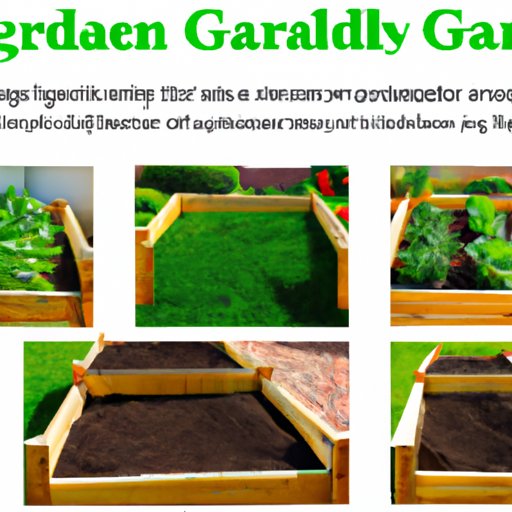Introduction
Raised garden beds are an excellent way to grow healthy, fresh vegetables with ease. They offer numerous benefits over traditional gardens and can be tailored to fit almost any size of garden or yard. In this article, we’ll explore why raised garden beds are becoming increasingly popular and provide a guide for creating and maintaining a raised bed at home.

Benefits of Growing Vegetables in Raised Garden Beds
Raised garden beds are a great way to create an attractive and productive vegetable garden without having to till up a large area of soil. They require less maintenance than traditional gardens and can be adapted to fit into different spaces.
One of the main benefits of using raised garden beds is that they help to improve drainage and conserve water. The soil in a raised bed warms up faster in spring, allowing you to get a head start on the growing season. Additionally, raised beds are easier to keep weed-free since they are enclosed on all sides.
Why Raised Garden Beds Are Better Than Traditional Gardens
Raised garden beds are ideal for small gardens and yards as they don’t take up much space. They also make it easy to access the plants, so you don’t have to bend down to tend to them. This makes them particularly suitable for elderly or disabled people who may find it difficult to kneel down and reach into the soil.
Raised beds also require less fertilizer and water than traditional gardens, as the soil within them is well-drained and aerated. This means that the plants receive more nutrients from the soil and can grow more healthily.

How to Plant and Maintain a Raised Garden Bed
DIY Guide to Building a Raised Garden Bed
Building a raised garden bed is relatively simple and can be done in a few hours. You will need some basic materials such as wood, screws, nails, and soil. Here’s what you need to do:
1. Measure and mark out the desired size of your raised bed on the ground.
2. Cut the wood to the desired length and width, making sure to leave enough room for the soil and plants.
3. Assemble the frame by screwing the pieces together.
4. Line the bottom of the frame with landscaping fabric to prevent weeds from growing.
5. Fill the frame with soil, making sure to leave enough room for the plants.
6. Plant your chosen vegetables and cover with mulch.
Tips for Choosing the Right Location for Your Raised Garden Bed
When choosing a location for your raised garden bed, there are several factors to consider. Firstly, make sure that the bed is in a sunny spot as most vegetables require at least six hours of sunlight per day. Secondly, choose a spot that is close to a water source, as this will make it easier to water the plants. Finally, make sure that the bed is in a sheltered area to protect the plants from strong winds.
Advantages of Using Raised Garden Beds for Home Gardening
Raised garden beds are an ideal choice for home gardeners as they require less effort and maintenance than traditional gardens. They also provide better control over soil conditions and make it easier to access the plants. Additionally, raised beds are easy to customize according to your specific needs, allowing you to choose the right size, shape, and location for your garden.
Which Vegetables Grow Best in a Raised Garden Bed?
Almost any type of vegetable can be grown in a raised garden bed, but some are better suited to the environment than others. Tomatoes, peppers, squash, cucumbers, and beans are all good choices as they thrive in warm, well-drained soil. Leafy greens, such as lettuce and spinach, also grow well in raised beds, as do root vegetables like carrots and potatoes.
Conclusion
Raised garden beds are an ideal choice for home gardeners looking to grow healthy, fresh vegetables. They require less maintenance and offer numerous benefits over traditional gardens. With the right location, materials, and plants, you can easily create a thriving raised bed garden.


